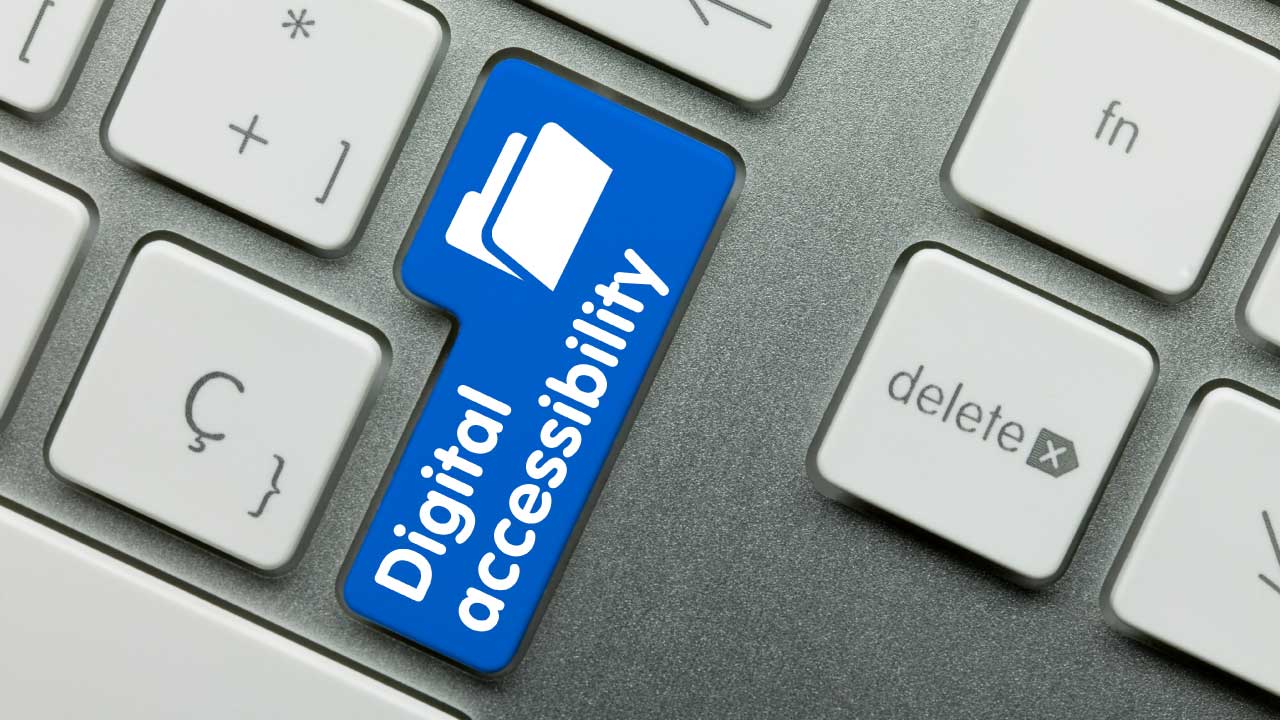Make Your Nonprofit’s Digital Campaigns Accessible for Year-End Success

Now is the perfect time to ensure your digital campaigns and websites comply with accessibility standards. With end-of-the-year appeals being developed and sent out before you know it, you’ll want to ensure that every piece is fully optimized for its target audience. Let’s dig in.
What Do We Mean by “Accessibility”?
In general, accessibility means you’re making sure that the digital products you develop can be used by everyone, regardless of their ability. The latest data from the 2022 Behavioral Risk Factor Surveillance System (BRFSS) reveal that more than 1 in 4—over 70 million—adults in the United States reported having a disability in 2022. These disabilities can include visual, speech, motor, and hearing impairments, whether permanent or temporary. For instance, if you break your favored hand or arm, it will impact how you can use a computer mouse and navigate a website.
Accessibility matters for two main reasons. First, including people with disabilities makes good business sense. When they feel welcome by your organization, they’ll bring their support, dollars, and social circle along for the ride. And second, being inclusive is just the right thing to do. Inclusion ensures that we’re making products for as many people as possible and that our content and products are comfortable for everyone, regardless of ability, race, gender, sexual orientation, economic status, or other differentiator.
When it comes to accessibility, there are two key regulations to keep in mind:
- ADA Compliance: This means your site complies with the Americans With Disabilities Act (ADA) and U.S. law Section 508.
- WCAG: This compliance means your website follows the standards set by the World Wide Web Consortium (W3C).
Inclusion is the larger lens through which we view accessibility. By considering users’ sensitivities and experiences, we can ensure that no one is excluded.
Accessibility in Web Design
There are three pillars of accessibility: design, content, and technology. A website based on these pillars creates a synergy between user experience and search engine optimization (SEO). In other words, a clear and clean design, easy-to-read content, and technology with wide-ranging functionality combine for a positive user experience, which helps you appear in more search engine results.
- Design: Accessible design comes down to choices like images, fonts, font sizes, and colors. Is there enough contrast? Is your copy easy to read?
- Content: Your content should be structured so that it’s easily recognizable by screen readers. This includes adding alt text to images and videos.
- Technology: Websites and emails should be mobile-responsive and automatically adjust to a device’s accessibility settings. Users should also be able to navigate your website with their keyboards—think tabbing through your menu options.
Different individuals often handle design, content, and technology — maybe even different departments. So, accessibility should be an organization-wide priority, with buy-in from the executive level on down.
Tips for Making Your Website More Accessible
Adding accessibility settings to every page of your existing website may seem impossible, but you can take some small steps to make the process easier.
First, assess where you are. Do images and PDFs have alt tags for screen readers? Is there a clear contrast between your font and background colors? Can you tab through your navigation? Plenty of auditing tools available online — some free — can help you conduct basic testing, such as WebAIM. Put in your URL, and it produces a list of the page’s accessibility issues.
Once you’ve finished your audit, determine whether you can solve any issues. For instance, adding alt text is an easy fix — there should be fields or guides for it in your content management system. Larger issues may take some time and require outside help.
In addition, designate a point person to lead your accessibility efforts. This could be the person who adds the content to your site. However, remember that prioritizing accessibility works best when it’s part of your organization’s culture.
Reach out to other organizations to see how they solve accessibility issues. Your peers can help you find creative and cost-effective solutions. Moreover, you can point to this organization as an example, which could help you get buy-in from leaders and staff. To that end, educate your nonprofit’s stakeholders on why accessibility matters and what it means for your organization.
Accessibility is everyone’s responsibility. For more tips and advice, listen to the podcast Who’s Responsible for Accessibility? Everyone